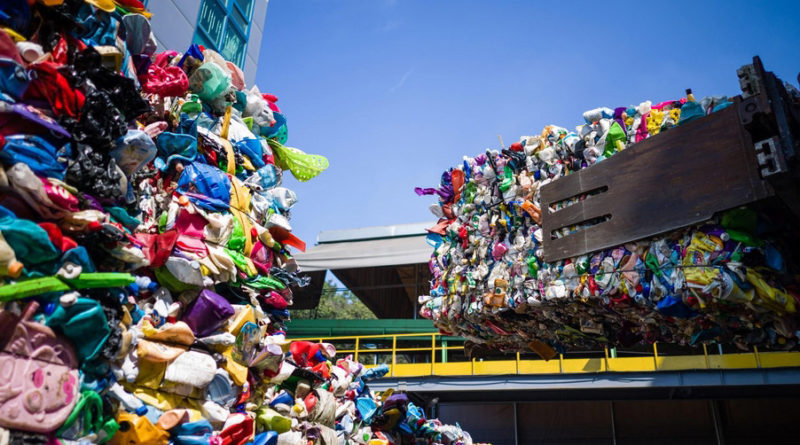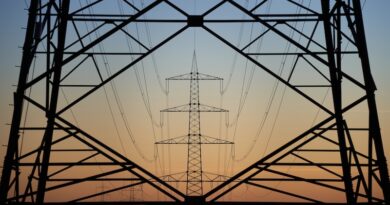
Circularity of global plastics value chains – combining environmental ambition with economic opportunity
There has always been the perception of tension between the objectives of protecting the environment and society’s ambition for growth and prosperity as already expressed in the so-called “Brundtland Report” [1] prior to the World Conference on the Environment in Rio de Janeiro in 1992 (UNCED 1992).
In reaction to increasing pressure on the earth resources the concept of the Earth’s ecological boundaries was developed[2] putting forward the basic idea that our planetary system needs to find a so-called “safe space” in which society can meet its needs without sudden or irreversible changes in the environment.
Against that background the European Commission presented an EU action plan for the transition to a circular economy in 2015.[3] This plan aimed at the transition to a circular economy in the EU proposing measures covering the whole life cycle of products and materials.
That was to be the starting point for moving away from a linear economic model that is highly resource-intensive and which is inappropriate both from an environmental sustainability perspective, and from an economic point of view.
The transition to a circular economy is a means to strengthen European competitiveness by reducing the scarcity of resources and price volatility of raw materials and by creating additional incentives to develop new business models.
In 2018, the Commission adopted a comprehensive package of measures in the field of plastics and chemicals,.[4] aiming at transforming the way plastics and plastic products are designed, produced, used, and recycled so that Europe could start the transition towards a new plastics economy. While the focus was on domestic action it was already clear at the time that opportunities and challenges linked to plastics are global and addressing them would require action at the international and global level.
Under the new Commission taking office in 2019 the work on circular economy continued and the Commission presented a second Circular Economy Action Plan in March 2020.[5]
Since then, the European Commission has – in a dense sequence- put forward proposals highly relevant for the plastics sector such new rules on shipments of waste, a new Eco-design Regulation, a revised Construction Products Regulation as well as an EU strategy for sustainable and circular textiles.
Proposals on microplastic pollution, on bio-based, biodegradable, and compostable plastics and for a revision of the requirements for packaging and packaging waste in the EU are planned for the near future. This creates an increasingly complete regulatory framework aimed at providing a level playing field for the economy as well as a facilitating environment for the transition to a more circular economy.
It is also clear, however, that the transition to a circular plastics economy will not be achieved through Commission packages alone; the transition requires a joint effort by all. There is a need to mobilise all actors in the European Union, including Member States, regional and local authorities, businesses, and NGOs. The role of local and regional authorities is of utmost importance.
Business and civil society initiatives are essential for the continued success of the joint efforts to move towards a circular economy in Europe and globally as this cannot be done in Europe alone.
The EU is therefore active internationally in the field of the circular economy, initiating and supporting proposals in international negotiations. At global level, the EU has created an alliance of states and stakeholders working together to promote the circular economy, the so-called Global Alliance on Circular Economy, and Resource Efficiency (GACERE). [6]The EU also supports the extension of controls on hazardous waste, materials, and chemical substances in multilateral environmental conventions. A further concern for the EU since the adoption of the European Plastics Strategy in 2018 has been to enshrine the principles of the circular economy at global level in the context of a global agreement to combat plastic pollution.
The EU has played a crucial role in taking a decisive step forward at the 5th session of the World Environment Assembly in Nairobi (UNEA 5) in Maerz 2022. UNEA has a decisive role to establish an International Negotiating Committee (INC) to negotiate an agreement by 2024 [7] The first meeting of the INC will take place at the end of November. [8].
These political and policy developments domestically and at the global level present a unique opportunity to continue the transition and to complete in an international environment, together with our partners.
[1] Our Common Future, Report, from the United Nations World Commission on Environment and Development
Oxford University Press, 1987, Oxford University Press
[2] ‘Planetary boundaries: Guiding human development on a changing planet’. Science. 347 (6223): 1259855
[3] Closing the loop – An EU action plan for the Circular Economy. Closing the loop, Brussels, 2.12.2015. COM (2015) 614 final.)
[4] http://ec.europa.eu/environment/circular-economy/index_en.htm
[5] Communication from the European Commission, A new Circular Economy Action Plan – For a cleaner and more competitive Europe, Brussels, 11.3.2020, COM (2020) 98 final
[6] https://ec.europa.eu/environment/international_issues/gacere.html
[7] https://www.unep.org/news-and-stories/press-release/un-environment-assembly-concludes-14-resolutions-curb-pollution
[8] https://www.unep.org/events/conference/inter-governmental-negotiating-committee-meeting-inc-1




